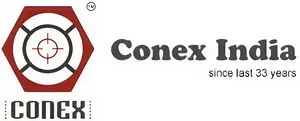
Aluminium Grounding Lugs and Lay-in Lugs: Essential Components for Electrical Safety and Efficiency
In the world of electrical systems, proper grounding and bonding are paramount to ensure safety, prevent equipment damage, and maintain system integrity. Two crucial components in this field are aluminium grounding lugs and lay-in lugs. This article will delve into the characteristics, applications, and benefits of these essential electrical components.
Aluminium Grounding Lugs, Aluminum lay In Lugs, Grounding Connectors : Cost-Effective and Corrosion-Resistant
Aluminium grounding lugs grounding connectors Aluminum lay in Lugs have gained popularity in recent years as a reliable alternative to traditional copper lugs. Let’s explore their key features and advantages:
- Material Properties for Aluminium grounding connectors Aluminum lay in Lugs Aluminum ground lugs:
- Composed of high-grade aluminium alloys
- Excellent corrosion resistance, particularly in outdoor environments
- Lightweight yet durable, making installation easier
- Cost-Effectiveness:
- Generally more affordable than copper alternatives
- Helps reduce overall project costs without compromising on quality
- Versatility:
- Available in various sizes to accommodate different wire gauges
- Suitable for both residential and commercial applications
- Performance of Aluminum lay in Lugs Aluminum ground lugs::
- Provides reliable electrical continuity
- Meets or exceeds industry standards for grounding and bonding
- Applications of Aluminum lay in Lugs Aluminum ground lugs::
- Commonly used in outdoor electrical installations
- Ideal for grounding transformers, generators, and other large equipment
- Effective in areas with high moisture or salt exposure
While aluminium grounding lugs offer numerous benefits, it’s important to note that proper installation techniques, including the use of anti-oxidant compounds, are crucial to prevent galvanic corrosion when connecting with dissimilar metals.
Aluminum lay in Lugs Aluminum ground lugs: Lay-in Lugs: Simplifying Electrical Connections
Lay-in lugs, also known as lay-in wire connectors, have revolutionized the way electrical connections are made and maintained. Here’s an in-depth look at these innovative components:
- Design Features:
- Open-sided barrel for easy conductor insertion
- Slotted design allows for “laying in” of wires without disconnecting entire circuits
- Available in both aluminium and copper variants
- Installation Benefits:
- Significantly reduces installation time
- Enables quick and easy wire changes or additions
- Minimizes downtime during maintenance or upgrades
- Versatility:
- Compatible with a wide range of wire sizes
- Available in various configurations (single, double, or multiple wire capacity)
- Suitable for both main and branch circuit applications
- Safety Considerations:
- Reduces the risk of accidental disconnections
- Allows for visual inspection of connections
- Helps maintain proper torque on connections
- Common Applications:
- Switchboards and panel boards
- Motor control centers
- Distribution equipment
- Grounding and bonding systems
- Material Options:
- Aluminium lay-in lugs: Cost-effective, lightweight, suitable for aluminium conductors
- Copper lay-in lugs: Excellent conductivity, ideal for copper conductors
Selecting the Right Lug for Your Application
When choosing between aluminium grounding lugs and lay-in lugs, consider the following factors:
- Environmental Conditions:
- For outdoor or corrosive environments, aluminium grounding lugs may be preferable
- Indoor applications may benefit from the flexibility of lay-in lugs
- Wire Material:
- Ensure compatibility between the lug material and conductor material to prevent galvanic corrosion
- Installation Requirements:
- If frequent maintenance or wire changes are anticipated, lay-in lugs offer significant advantages
- Code Compliance:
- Verify that the chosen lug meets local electrical codes and standards
- Cost Considerations:
- Balance the initial cost of the lug with long-term maintenance and replacement costs
- Load Requirements:
- Ensure the lug’s ampacity rating matches or exceeds the system’s needs
Proper Installation and Maintenance
Regardless of the type of lug chosen, proper installation and maintenance are crucial for optimal performance and safety:
- Follow manufacturer guidelines for installation procedures
- Use appropriate tools and torque specifications
- Apply anti-oxidant compounds when necessary, especially with aluminium components
- Conduct regular inspections to check for signs of corrosion or loose connections
- Keep detailed records of installations and maintenance for future reference
Conclusion
Aluminium grounding lugs and lay-in lugs play vital roles in modern electrical systems. By understanding their characteristics and applications, electrical professionals can make informed decisions to enhance safety, efficiency, and reliability in their projects. As technology continues to evolve, these components will likely see further innovations, contributing to the ongoing improvement of electrical infrastructure worldwide.
Related terms:
Electrical grounding connectors ,Copper lay in Lugs manufacturers Aluminum ground clamps, Grounding lug terminals, Compression grounding lugs, Cable grounding lugs, Wire grounding connectors, Aluminum ground rod clamps, Electrical grounding fittings, Aluminum terminal lugs, Mechanical grounding connectors, UL listed grounding lugs, Aluminum cable lugs, Earthing connectors, Grounding bus bars, Aluminum compression terminals, Electrical bonding lugs, Aluminum wire connectors, Heavy-duty grounding lugs, Aluminum parallel groove connectors, Split bolt connectors for grounding





